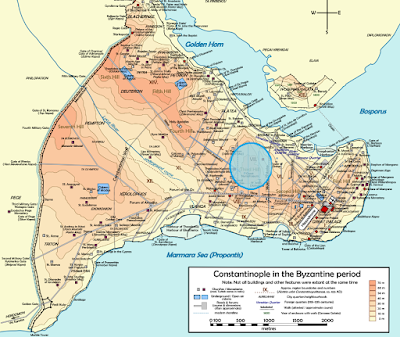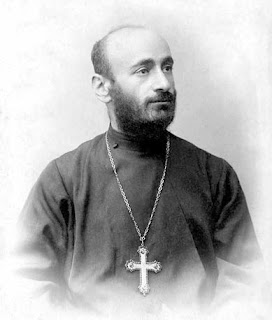Grand Bazaar
Grand Bazaar, Kapalı Çarşı in Turkish literally meaning covered market is one of the earliest malls in history and largest market of its kind in the world (1,2). It is still Istanbul's largest market place. Sultan Mehmed found it on the Third Hill close to the first palace of his in 1456 shortly after the conquest of Constantinople (1). Four years later the construction ended and the building was endowed to the waqf of Hagia Sophia.
Spices and clothes were the primary items sold. The edifice standing at the center was devoted to trading of textles and pricey gems and was named Cevahir Bedesten. Cevahir is the plural of gem and comes from the word cawhar (Ar.) for gem and bedesten is derived from Persian bez+istan meaning the bazaar for bez namely for clothes. This building was alternately called the Old Bedesten where the grid was centered on. The New Bedesten was constructed on the slope going down from the Third Hill to the Golden Horn. A bedesten is based on the design of mosques and may further go back to Greco-Roman Basilica. Slave trade was done close to the bazaar where the Byzantines used to.
The Grand Bazaar is a true labyrinth where streets are roofed with vault and domes. It was restored on several occasions especially after the numerous fires that caught the city. Shops selling same kind of merchandise congregated in their own streets (1). Turkish architectural historian Ayverdi claims, more than half of the shops in the bazaar go back to the time of the Conqueror (1). The names of those streets come from various market guilds of which their establishments go back in time to that of the conqueror (1). The guilds that dominated the bazaar were very exclusive institutions. The members created a monopoly and the number of merchants and shops were frozen (2). Only the son of a member or one willing to pay a hefty price were allowed to replace the deceased merchant. The guild probably had a strong social security net and a single price that was decided upon made the envy between the members less likely. With westernization and a bigger role played by the minorities of the nation during the second half of the 19th century, mercantile ethics found a way into Grand Bazaar.
As the empire grew the Bazaar was the hub of Mediterranean trade. It must have been and it still is a colourful sight which was a demonstration of wealth and of the goods of and around the empire converging on this spot for exchange. The silk clothes came from Persia and spices from India, gems, furs, linen, leather all gathered from around the known world and processed. But one can see little of the tools that gave Europe the edge. The incentives and the technology of hardware sent the first European ships to Americas and around Africa bypassing the middleman the Ottoman Empire within a mere 50 years.
References
1. The Grand Turk, John Freely
2. Wikipedia, Grand Bazaar
 |
| Third Hill of Istanbul |
 |
| Plan of Kapalı Çarşı and Nuru Osmaniye Mosque |
The Grand Bazaar is a true labyrinth where streets are roofed with vault and domes. It was restored on several occasions especially after the numerous fires that caught the city. Shops selling same kind of merchandise congregated in their own streets (1). Turkish architectural historian Ayverdi claims, more than half of the shops in the bazaar go back to the time of the Conqueror (1). The names of those streets come from various market guilds of which their establishments go back in time to that of the conqueror (1). The guilds that dominated the bazaar were very exclusive institutions. The members created a monopoly and the number of merchants and shops were frozen (2). Only the son of a member or one willing to pay a hefty price were allowed to replace the deceased merchant. The guild probably had a strong social security net and a single price that was decided upon made the envy between the members less likely. With westernization and a bigger role played by the minorities of the nation during the second half of the 19th century, mercantile ethics found a way into Grand Bazaar.
 |
| Grand Bazaar Source: waveuptravel.com |
References
1. The Grand Turk, John Freely
2. Wikipedia, Grand Bazaar

Comments
Post a Comment